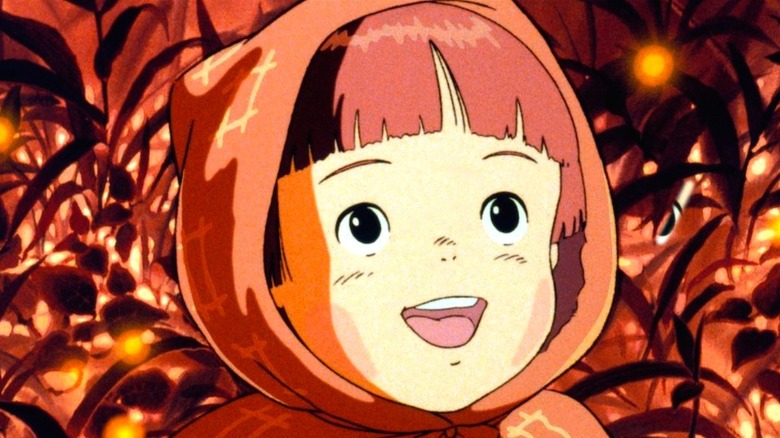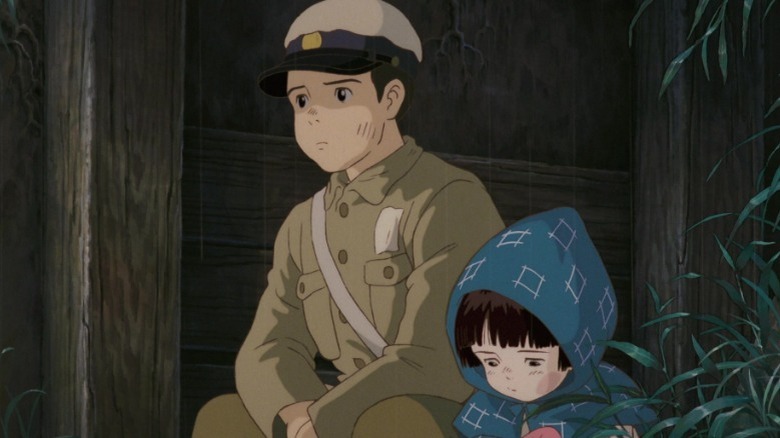Is Grave Of The Fireflies Based On A True Story?
Few movies are as synonymous with serious, mature, artistically outreaching feature animation as "Grave of the Fireflies," the 1988 Studio Ghibli effort that's widely considered the magnum opus of the great Isao Takahata and one of the best war films of all time in any medium.
Following Seita and Setsuko, two young siblings in the wreckage of firebombed Kobe near the end of World War II, "Grave of the Fireflies" pulls absolutely no punches in the depiction of the period's horrors and human cost, contrasting the protagonists' youth and innocence with the unfathomable depth of Japan's collective trauma. To a certain extent, like every movie that grapples honestly and directly with history, "Grave of the Fireflies" is the story not just of Seita and Setsuko, but of every Japanese child who suffered through World War II — it's a definitional depiction of the conflict in much the same way as "Rome, Open City" for Italians, "Come and See" for Russians, or "Dunkirk" for the British, to name a few other story-of-a-country WWII classics.
In more literal terms, however, was "Grave of the Fireflies" based on real life more directly? Does Takahata's screenplay have a specific reference point within the historical context of war-torn Japan? As a matter of fact, it does: The movie is derived from the true story of author Akiyuki Nosaka.
Grave of the Fireflies is based on a semi-autobiographical short story
Kamakura-born novelist Akiyuki Nosaka is widely considered one of the leading exponents of Japan's yakeato generation, comprised of the writers and artists who grew up during the harshest years of World War II and expressed their experiences through their work. In Nosaka's case, he hashed out his trauma most famously in "Grave of the Fireflies," a 1967 short story with semi-autobiographical elements.
Originally published in a literary magazine, Nosaka's "Grave of the Fireflies" was inspired by the author's own experience of losing his foster family during the final days of the war, while he was still a teenager. According to AllTheAnime, Nosaka was indeed adopted by his aunt when his mother died — though that happened much sooner in real life, shortly after his birth. The firebombing of Kobe claimed his uncle, but not his aunt, who survived despite terrible burns. Nosaka and his foster sister Keiko then started bouncing around from shelter to shelter like in the movie, but Nosaka wasn't able to provide adequately for Keiko and she died of malnutrition in 1945, exactly as Setsuko does at the end of "Grave of the Fireflies." The story was partly written as Nosaka's apology to his sister.
"Grave of the Fireflies" arrived amid a climate of cultural denial, when Japan's effort to rebuild and thrive included making the war a taboo subject, per The Independent. Nosaka's fearless confrontation of his own demons made waves in the country, and he turned down multiple film adaptation offers before Isao Takahata finally persuaded him that animation was the ideal medium for the story (via Ghibli Blog).

